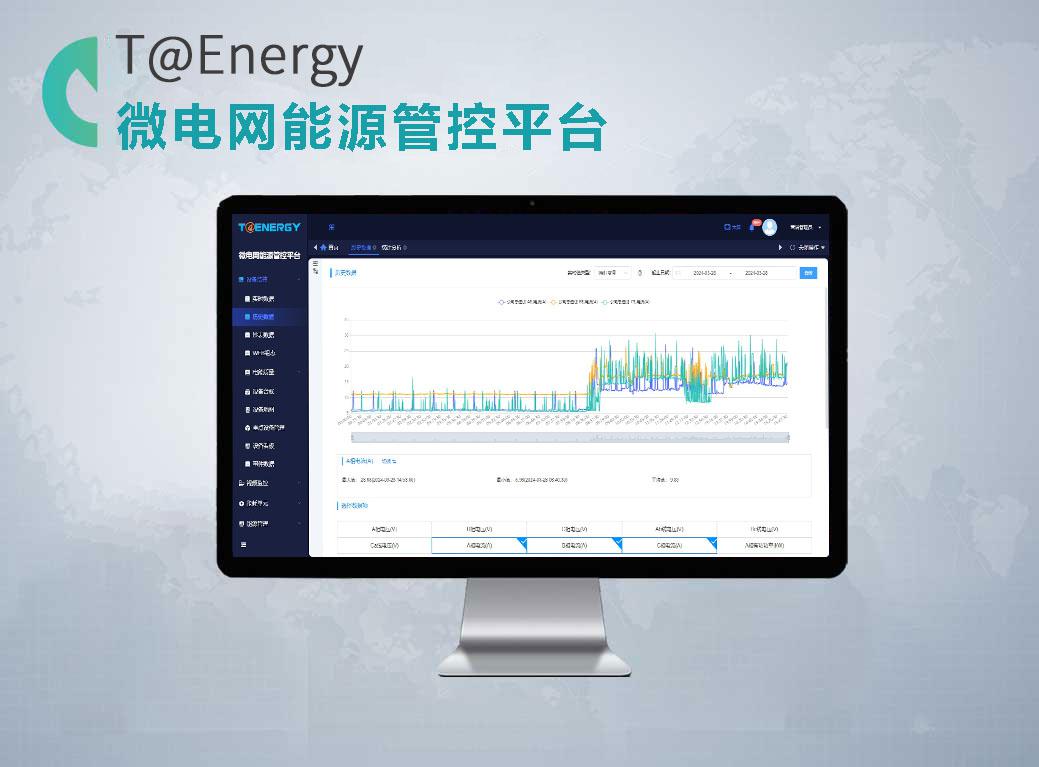It is an energy management system based on technologies such as the Internet of Things, big data, and artificial intelligence. It is designed to monitor, control, and optimize dispatch of various energy resources in microgrids (including power grids, photovoltaics, energy storage, energy storage, etc.) , to ensure the safe and stable operation of microgrids while improving energy utilization efficiency, reducing energy consumption costs and reducing carbon emissions.
The microgrid energy management system monitors the production, consumption, transportation and storage of various energy sources in the microgrid in real time, uses predictive analysis algorithms to predict future energy demand, intelligently dispatches various energy resources, and optimizes energy allocation to achieve control. Multi-energy complementary energy optimization for enterprise-level microgrids. At the same time, the platform can also realize remote monitoring and fault diagnosis of microgrid equipment, improving the reliability and availability of equipment.

The microgrid energy management system integrates functions such as power monitoring, energy monitoring, energy analysis, energy forecasting, energy management and control, photovoltaic monitoring, energy storage management, intelligent dispatch, equipment ledger, operation and maintenance management, etc., and is carried out through one platform and one APP. Centralized monitoring, unified scheduling and unified operation and maintenance.
Functional features of microgrid energy management system:
Energy monitoring: Real-time monitoring of the generation and consumption of various energy resources, including electric energy, photovoltaic, wind energy, energy storage, etc.
Energy analysis: Analysis and statistics of energy data on the power generation side and energy consumption side provide users with basis and reference for energy decision-making, helping to more accurately identify potential energy-saving measures and improvement opportunities.
Photovoltaic monitoring: Measure power generation and grid-connected power, monitor grid-connected quality, and monitor the real-time operating group status and meteorological data of photovoltaic power stations to achieve effective management of distributed photovoltaics.
Energy forecasting: Based on historical data, weather forecasts and other information, forecast future energy production to help formulate reasonable energy management plans.
Energy dispatching: According to energy demand and supply conditions, combined with power transaction cost data, various energy sources are optimally dispatched to ensure stable operation of the system while minimizing user energy costs.
Load management: Monitor load conditions and regulate energy use to maximize energy utilization efficiency.
Operation and maintenance management: Regular inspection, maintenance and repair of energy supply equipment and energy consumption equipment to ensure their normal operation and efficient work.
All in all, driven by the dual carbon goals and power grid operation security requirements, microgrid energy management systems will receive more and more policy support in the future. It is conceivable that more and more capital investment will be made in the future to promote the rapid development of the industry. Improve the safety of power grid operation, ensure safe production, and improve the efficiency of electric energy use.
